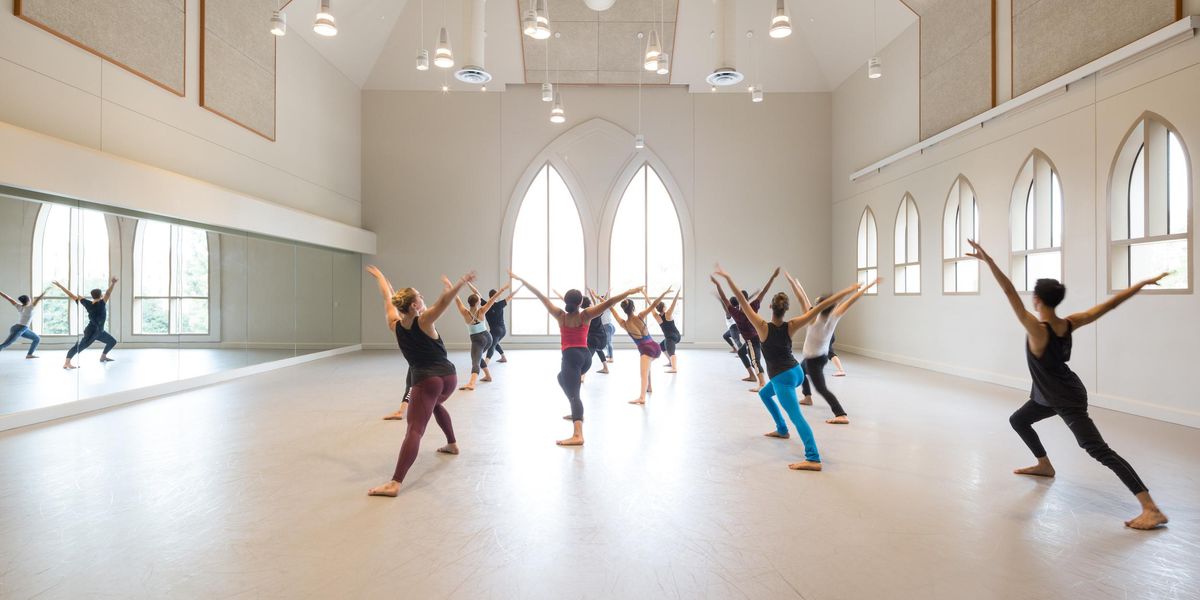On Broadway: Dancing Their Roots
Ron K. Brown brings Gullah rhythms to Catfish Row.
Audra McDonald (center) leads a number in
Porgy and Bess.
After just one look at the dancing in the 1959 movie version of Porgy and Bess, Ronald K. Brown felt the pressure lift. With no musical theater experience, he had agreed to provide choreography for a new, reimagined version of the classic Gershwin opera. Watching the Broadway-style jazz numbers in the film, he knew immediately that his residents of Catfish Row—like the real residents of Catfish Row—wouldn’t dance like that.
“I felt kind of liberated,” he says. “Some people might think I would need dancers who could do toe touches and flips”—here he adds a hearty laugh— “but I’m like, let’s have the community. How would they move at the funeral? At the picnic? Through their lives? I could discover how those people would move.”
The Catfish Row community sprang, of course, from the imagination of DuBose Heyward, the upper-crust Southerner who in 1925 wrote the novel Porgy, about poor blacks living in a rundown part of his native Charleston. Even before he and his wife, Dorothy, turned it into a play, George Gershwin had read it and decided to use it as the basis for a “folk opera.” Porgy and Bess, with music by Gershwin, book by Heyward, and lyrics by Heyward and Ira Gershwin, opened in 1935, changing the landscape of American music forever.
From the beginning, it was seen as a masterpiece in some quarters and a problem in others. The ravishing score—most notably the sinuous lullaby “Summertime”—was ultimately embraced and enshrined in American popular music. But the violence, the dialect, and the characters—Porgy is a crippled beggar, Bess is a drug user—have been derided as condescending stereotypes of black life invented by privileged whites.
Enter Tony-nominated Diane Paulus, who directed the brilliant revival of Hair three years ago and who is the artistic director of the American Repertory Theater (A.R.T.) in Cambridge, Massachusetts. Enlisting three black artists as collaborators—Pulitzer Prize-winning playwright Suzan-Lori Parks, Obie Award–winning composer Diedre L. Murray, and Brown—she set out to overhaul Porgy and Bess, generating a controversy about whether this iconic work of art needed to be fixed at all.
Brown’s stance on this question is both diplomatic and open-hearted. “When someone writes a story about a culture that they admire or have a curiosity about but that’s not their own,” he says, “there are probably some nuances that he doesn’t understand.”And he sees his contribution to the production, now on Broadway as The Gershwins’ Porgy and Bess, less as a matter of fixing than as an opportunity for deeper understanding.
As artistic director of Evidence, which he founded before he turned 20, in 1985, and as a busy choreographer for other companies as well, Brown has created high-energy work that incorporates the influence of urban street dance, contemporary concert dance and Latin-American dance (see “Spirit Made Visible,” June 2010). But the most pervasive influence comes from the stamping feet, whipping arms, and bent backs of traditional African dance. At first glance, it seems an unlikely partner for Gershwin’s music. But at a rehearsal-hall preview of “I Can’t Sit Down,” which closes Act One, the cast broke into a high-energy stomp that was accompanied not by Gershwin but by drumming. “We added something underneath,” says Brown.
The African notes are justified, he explains. Because of their isolation, the sea islands off the South Carolina coast nurtured a Gullah community whose language, music, and dance stayed in touch with its African roots. Andrea Jones-Sojola, a member of the ensemble, says, “These are dances that an ancestor of a person living in 1939 would have taught their children and grandchildren. We’re doing movements onstage from West Africa or the Caribbean that our grandparents probably taught us. They’re authentic dances that would have been passed down from generation to generation. So instead of just busting out in a dance number, they’re very authentic. And the fact that a real dancer doesn’t have to do it makes me all the more comfortable.”
Like most of the performers in the show, Jones-Sojola is a trained singer, not a trained dancer. “I’m the opposite of a dancer,” she says. But Brown auditioned everyone, and he made sure that there’s no one in the cast who doesn’t move well, whether or not they have dancers’ bodies. Audra McDonald’s Bess leads some of the dancing. Nathaniel Stampley, who is the understudy for Porgy and for Bess’s violent lover Crown, is among the men who drop to the floor for a series of spectacular traveling pushups. And no one looking at the number would guess that there’s only one trained dancer onstage.
She is Lisa Nicole Wilkerson, the dance captain, and she found working on the production eye-opening. “The cast, who are not dancers, had to really learn how to absorb movement information and be specific about it, not just kinda-sorta,” she says. “And Ron had to learn how to adjust to teaching non-dancers.”
Looking back, Brown insists it wasn’t that hard to turn singing actors into dancing actors. “Dancers say ‘I can do this,’ and you have to work through that to get them to what it is. This team may have said, ‘Oh, I can’t.’ That’s a little easier to get rid of.”
Sylviane Gold writes on theater for
The New York Times.




